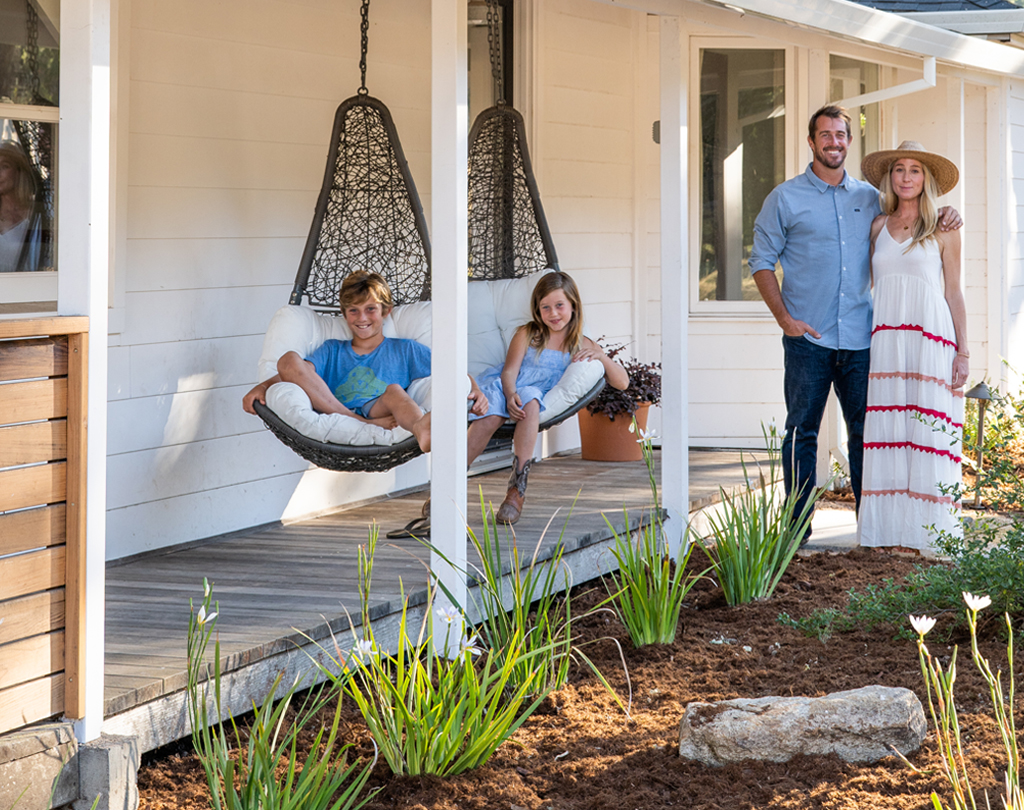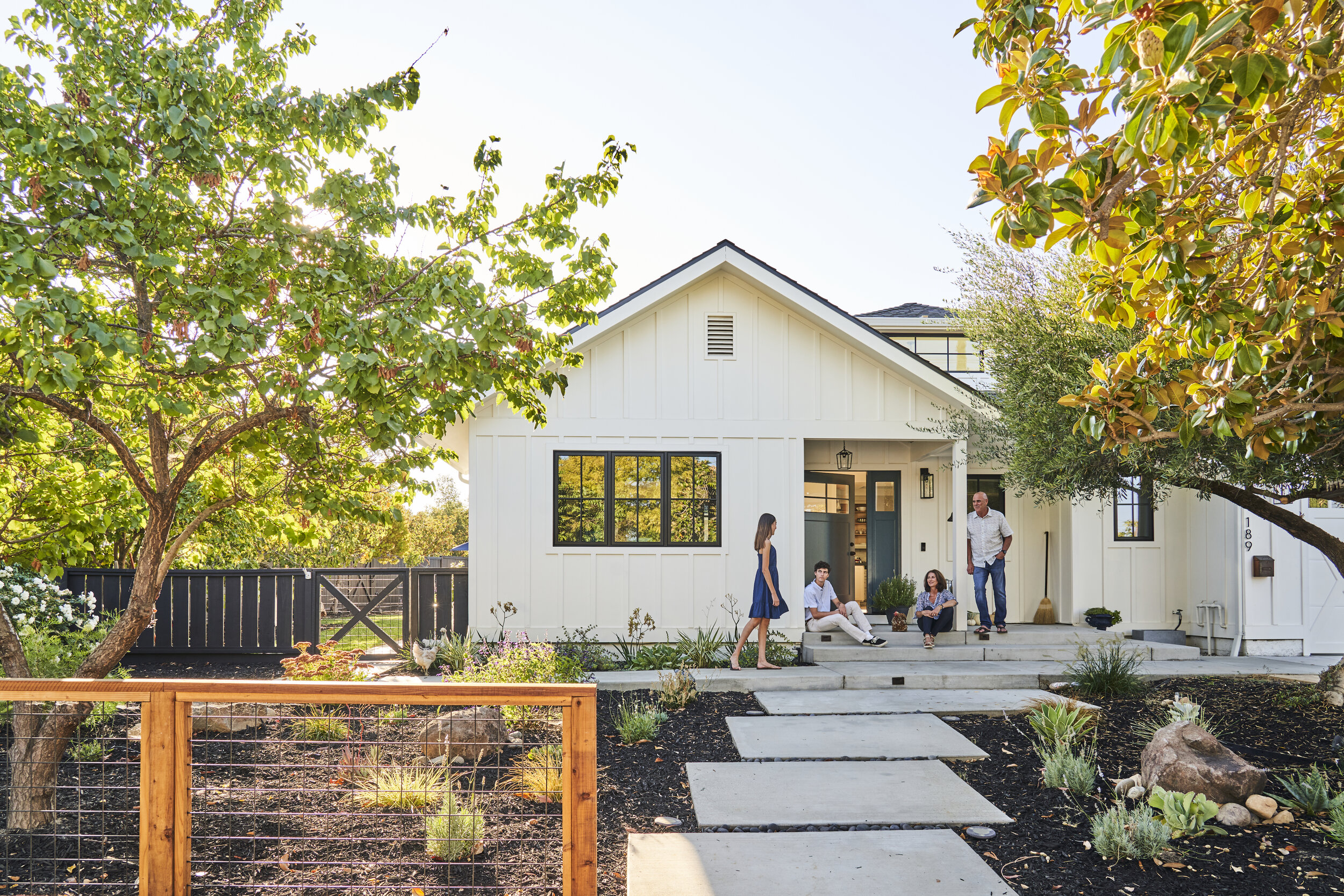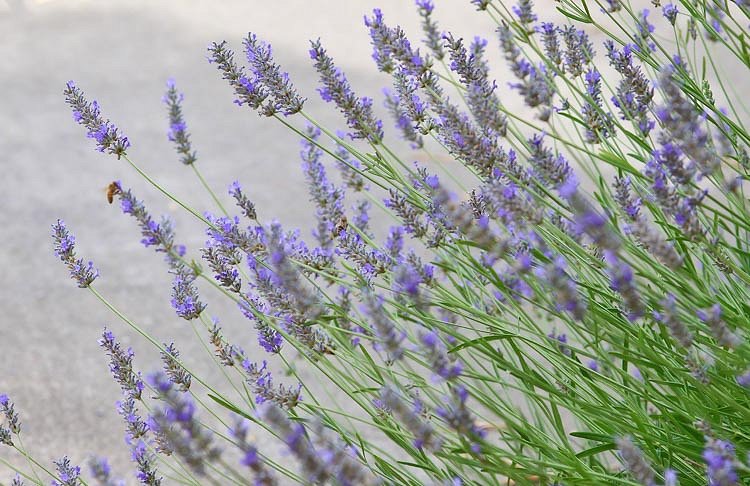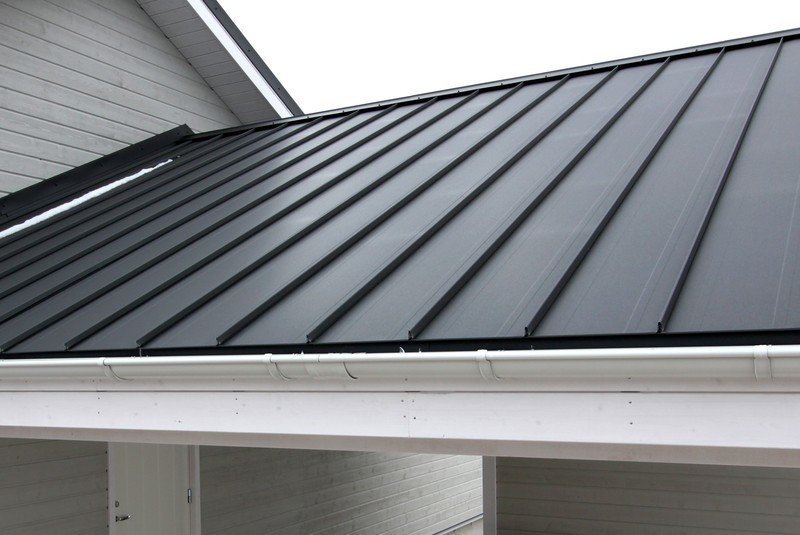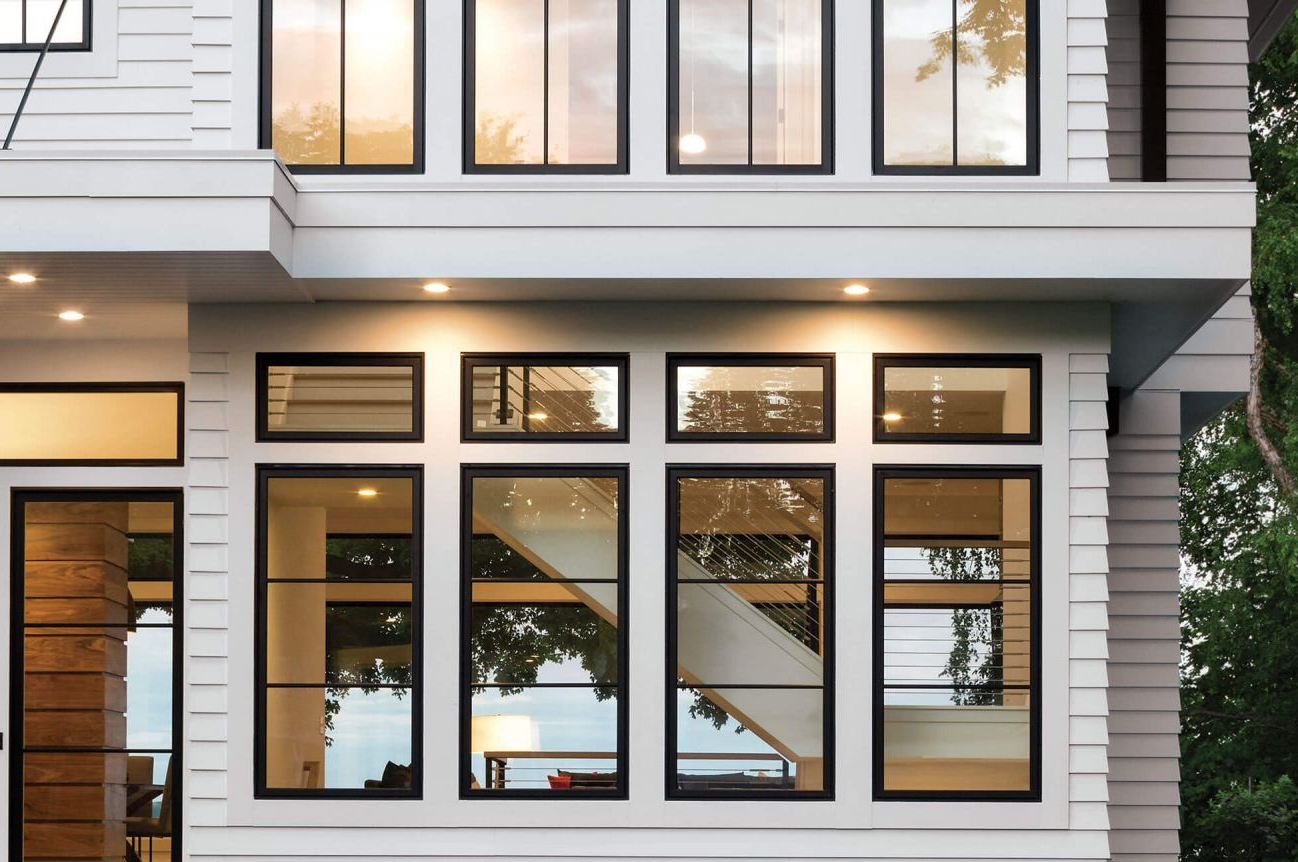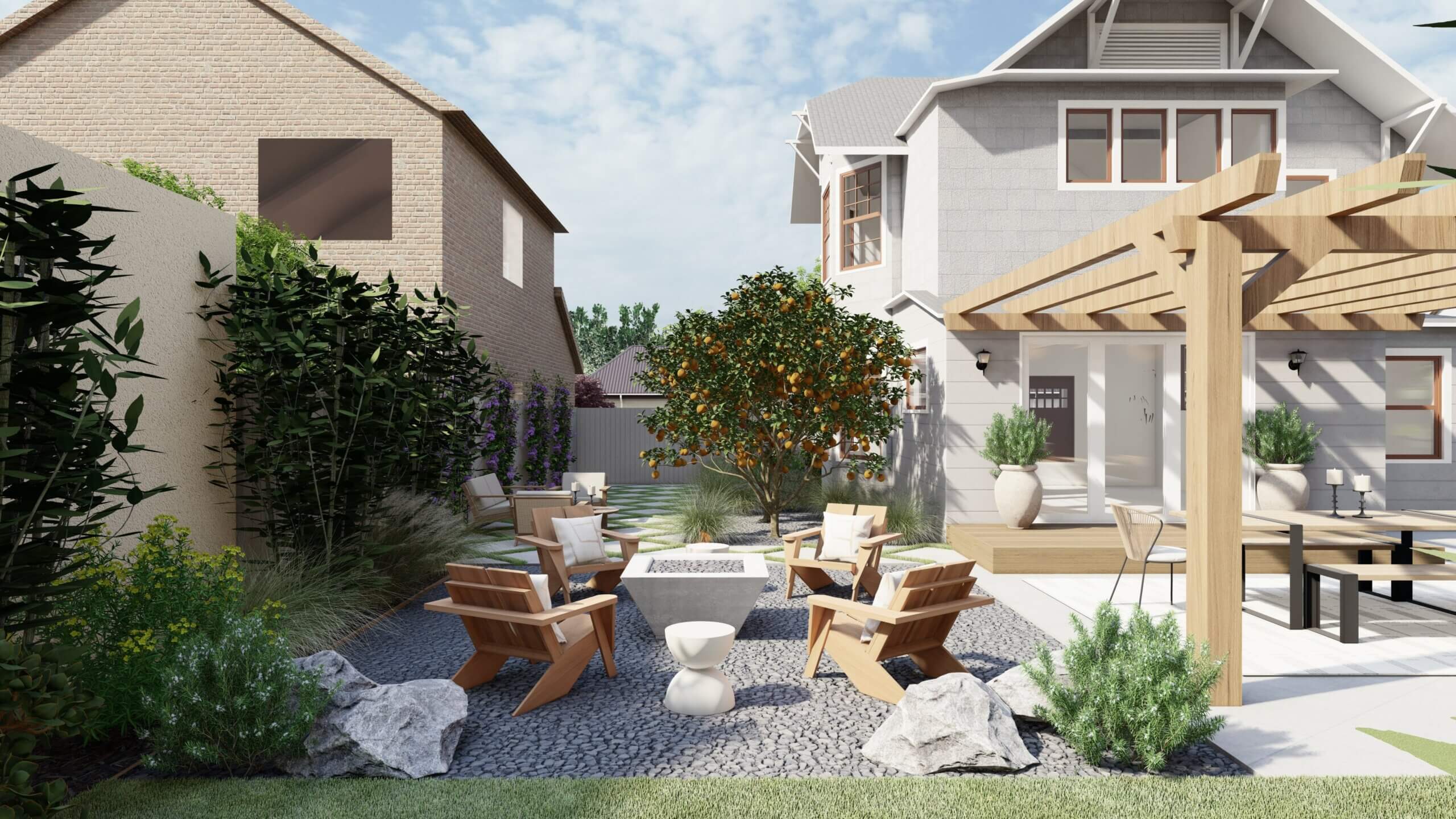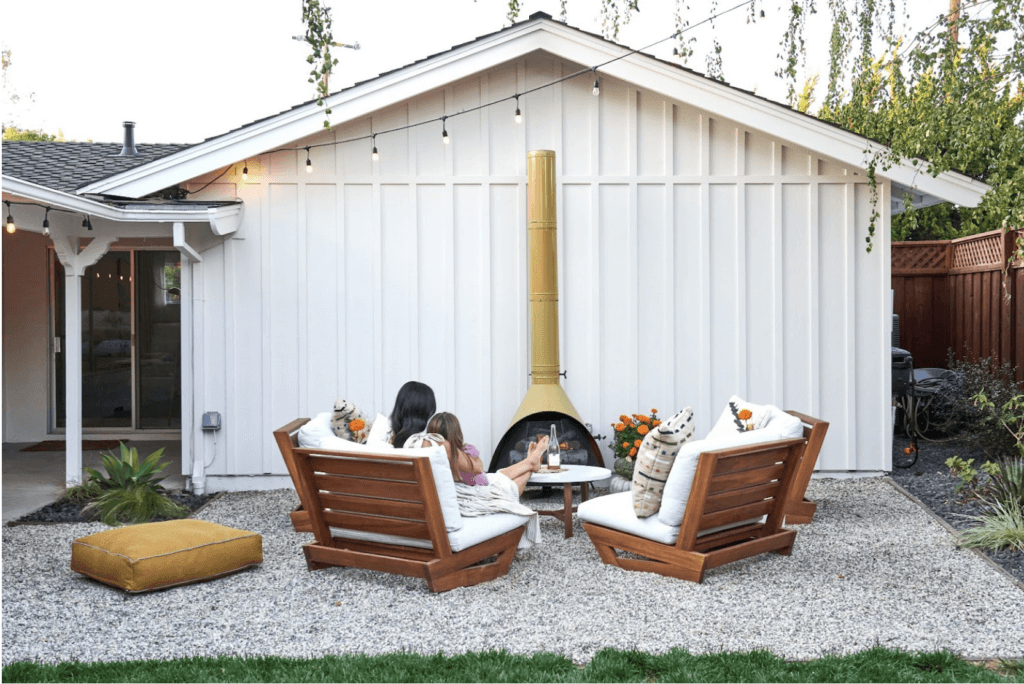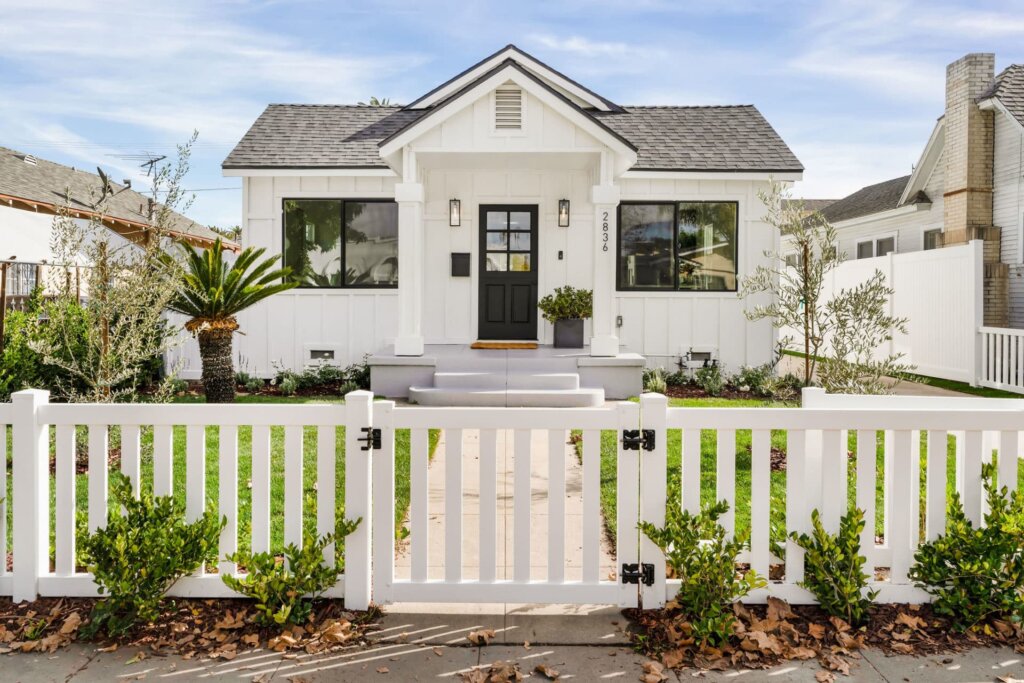
Ready to design your dream yard?
Get StartedA low maintenance Yardzen front yard in Los Gatos, CA
Creating year-round curb appeal is a top request from Yardzen clients. Yet, many homeowners live busy lives and don’t want to spend their weekends maintaining their front yard and exterior facade. So, we asked Yardzen’s Design Director, Kevin Lenhart, for his top tips on creating low-maintenance front yard landscaping that is beautiful, functional, and sustainable.
Less Lawn
Lawns are the most management-intensive part of a yard’s landscape. Maintaining a lawn requires fertilizer, regular mowing, gasoline (to power lawnmowers), and water, often lots of it. This all adds up to considerable effort and expense, especially in drier climates.
Our advice:
Hang on to lawn where you need it, like kids’ play areas, but skip it where it’s not functionally necessary.
Utilize small amounts of lawn for “cues to care”. A crisply mown path framing street-facing planting signals a well-designed landscape to the neighborhood.
What can we replace lawns with? Options abound. Broaden your planting areas, add mulch or groundcover planting to in-between spaces, sub in artificial turf, or expand paving, gravel, or other hardscape areas. Any of these solutions – or a combination of them – should net less maintenance for you. Read our Guide to Grass Alternatives for an Eco-Friendly Yard to learn more.
Pro tip: A modest mown frame contrasts marvelously with looser ornamental grass and perennial plantings – picture messy hair in a suit and tie.
This Yardzen front yard makes great use of mulch.
Mulch
Mulch is a workhorse. It suppresses weeds, preserves soil moisture, and stabilizes soil temperature. Plant-derived mulches can also enrich soil as they break down.
Bottom line: mulched planting areas require less weeding and watering, saving you time and money while keeping your street-facing planting areas looking sharp.
Creeping rosemary is a beautiful and fragrant evergreen groundcover
Groundcover Planting
Groundcover planting does all that mulch does, and more. Roots from groundcover plants improve drainage and soil health, while their foliage is valuable for stormwater management (more on this below). From a maintenance perspective this means less mess in your yard, healthier plants requiring less upkeep, and greater groundwater reserves to offset irrigation needs.
Functional, got it, but how do we make groundcover plants look attractive from the street?
Allow groundcover plants to spread between taller ornamental plants, or to encircle the base of trees. This establishes a base layer for taller ornamentals to rest upon, producing a vertically-layered, full planting aesthetic while keeping actual plant quantities (and planting budget) under control.
The added ground-level vegetation will also help to cool breezes as they blow across your yard to your front porch or patio.
Pro Tip: seek out native groundcovers – they’ll require the least maintenance and irrigation to thrive, and will offer superior habitat value to boot.
Low-maintenance, climate-adapted lavender
Pick the Right Plants
There is much to consider when choosing plants to minimize maintenance (so much so, we wrote a blog post about Low-Maintenance Plants).
The plants you choose determine the amount of water, fertilizer, pest management, and general upkeep required to keep your yard looking curb-ready. Pick plants that are happy in your yard – they’ll look the best, and will require the least of you.
Quick tip: wherever you may live, we advise browsing native species with proven track records as landscape plants – they’re likely to succeed with the least help.
Irrigation
The less irrigation your plants require, the less time and money you will allocate to watering your plants. Select plants that can survive with minimal or zero irrigation once they are established.
Don’t worry, this approach won’t limit your options to succulent gardens. By choosing species well-adapted to local weather patterns, you can support planting designs filled with plants of all types, from perennials to shrubs, trees to groundcovers. Pro tip: Look to your regional landscape for inspiration.
An irrigation system will save you the hassle of hand-watering, but an inefficient system will use more water than you need – and you’ll pay the bill for it.
Our advice:
Use drip irrigation for everything except lawns (use spray on lawns)
Make sure any spray irrigation hits its target – don’t water your driveway.
incorporate a weather sensor into your irrigation system – it will stop watering during wet weather.
Feeling low tech? Skip the weather sensor and just turn off your system when a storm is coming, or during cool or rainy seasons.
Stormwater Management
Stormwater is precipitation that falls onto your property. Left unchecked, it roams the grounds sweeping debris into unwanted areas and eroding unprotected slopes. Planting is your best defense against this mess. Mulch can be swept away, but plant matter holds fast, capturing water and coaxing it back into the ground.
Not wanting to go overboard on planting? Permeable surfaces like gravel or rock also capture and infiltrate stormwater. Perhaps a bit of both? Creative combinations of planting and rock beds can offer striking front-yard schemes for managing stormwater.
However you do it, managing runoff will keep your post-storm maintenance to a minimum, while helping to reduce flooding and pollution in your region.
A Yardzen front yard that utilizes easy-to-maintain pavers and decomposed granite
Hardscape
Durability is crucial for exterior design materials, and paving is no exception. An appropriate paving material can withstand stresses from weather, site conditions, and plain old wear and tear, but low quality or regionally inappropriate materials will crack, crumble, or find some other way to fail before their time, aesthetically as well as functionally.
Investigate which materials perform best in your area and use them, particularly in high visibility front paths or porches. (Pro tip: look for regionally-sourced materials.)
Invest in high quality materials up front to avoid early repairs or replacement down the road.
This front porch utilizes composite wood decking.
Wood (and its Counterparts)
Wood is gorgeous, but it requires work to maintain. It’s also softer than rock or concrete, and deteriorates more quickly, particularly in extreme weather – it’s a bad call for desert heat.
If you are committed to wood, apply coats of paint, stain, or sealant every one to two years (more often in intense climates) to maintain its integrity and appearance. This regimen is not low maintenance, per se, but it will increase the overall longevity of wood features, and keep them looking as good as can be expected. You’ll still see some weathering over time, but this can be handsome in the right context.
Too much work? Try composite decking. Blending wood fiber and recycled plastic, composite is an environmentally friendly, attractive, and durable wood alternative (we recommend TimberTech decking and railings). The best part: no waterproofing necessary. Install it and you’re done.
Bright white paint on elegant shiplap siding adds year-round curb appeal to this Yardzen yard.
Paint and Sealants
Paint is a huge factor in creating curb appeal—it’s one of the top reasons we launched our Curb Appeal package. Exterior paint sets the stage for front yard landscaping, and suffice to say that paint color, finish, and quality merit careful consideration. Be sure to check out our Guide to Choosing Exterior Paint.
Paint selection is as much a maintenance question as an aesthetic one. Premium paints tend to offer greater protection from the elements, and help offset maintenance to your home’s exterior. As with other exterior home decisions, we advise investing more upfront to save yourself effort and expense down the road.
Wood stain’s level of protection depends on its opacity. Clear stains are not as effective at protecting wood from weathering as opaque stains. If you still want to see some woodgrain (we don’t blame you), semi-transparent stain is a good compromise, offering greater protection without losing the wood look.
Don’t Forget Decor!
Exterior decor, like mailboxes, house numbers, planters, and lighting are transformative. Well-considered details make your home’s outdoor spaces look thoughtful and elevated throughout the seasons of your yard. That’s why we include them in our Curb Appeal package.
To learn more, read our blog post with Rejuvenation all about creating year-round curb appeal.
Metal roofing comes in many colors, including white, black, and gray
Roofing
Replacing roofing is a huge expense, but deferred repairs can cascade into a series of other even costlier headaches for homeowners. It pays to maintain the integrity of your roof, but we’d all prefer to just not have to worry about it.
Enter metal roofing. It’s super durable, commonly warrantied to 40 or 50 years, which is approximately three times the lifespan of asphalt shingles (it also costs about two or three times as much). It’s also very fire resistant (if you live in the western US, take note), and has high solar reflectivity, which reduces heat absorption and helps to offset home energy use.
Aesthetically, metal roofing comes in a variety of appearances – it can look like a metal roof, or you can get versions designed to look like tile or shingles. The roofing’s finish has superior longevity – no more cracks or bald patches where shingles have lost their texture. From the street, your roof will stay looking fabulous for decades without you lifting a finger.
Windows
As with the roof, window integrity affects overall home condition—leaky windows let in moisture and air that can cause all types of trouble, from rot to inefficient energy use.
To avoid maintenance and expense, we recommend installing windows that will hold their shape and maintain a weatherproof seal. To this end, window material is the biggest factor to consider (Marvin offers an excellent summary of different window materials).
In general, wood windows are prone to warp more easily, while aluminum and fiberglass windows (or windows with a combination of both materials) maintain their shape and the integrity of their seal. Fiberglass in particular is pretty wonderful. It holds paint well, resists rot, has excellent thermal efficiency, and performs well in extreme climates. It’s also competitively priced. If the wood look is important to you, fear not – many windows combine materials, balancing the benefits of an aluminum or fiberglass frame with the appearance of wood.
Whatever windows you select, we recommend considering energy efficiency—windows are one of the biggest factors affecting home energy expenditure.
Kick Back and Enjoy the View
As these tips show, much of maintenance is determined by decisions you make in the design and installation phase. If hassle free curb appeal is a priority for you, let your design and build teams know early—your weekends will thank you.
Designing a landscape tailored to your needs
Yardzen’s award-winning online landscaping design is tailored to each of our client’s local climate and design preferences. Our design process begins with understanding your space, aesthetic preferences, and a discussion of your budget and vision to minimize surprises when it comes time to build. We want to make sure our top-notch designers can personalize your yard, delivering 3D and CAD renders that reflect what’s most important for your outdoor life and unique environment, while keeping costs within range. We do this by utilizing our in-house Build Team made up of former contractors and our Pro Network of vetted professional landscapers across the country.
Ready to level up your home improvement with a professional landscape design? Create your design profile or explore our design packages today!
Ready to design your dream yard?
Get StartedFeatured Articles
How an Interior Designer Created “Outdoor Rooms” in Her Yardzen Yard

The Best Outdoor Cold Plunge Tubs & Ice Baths in 2024 (Chosen by Our Client...

Our Dreamiest Plunge Pool Yard Designs
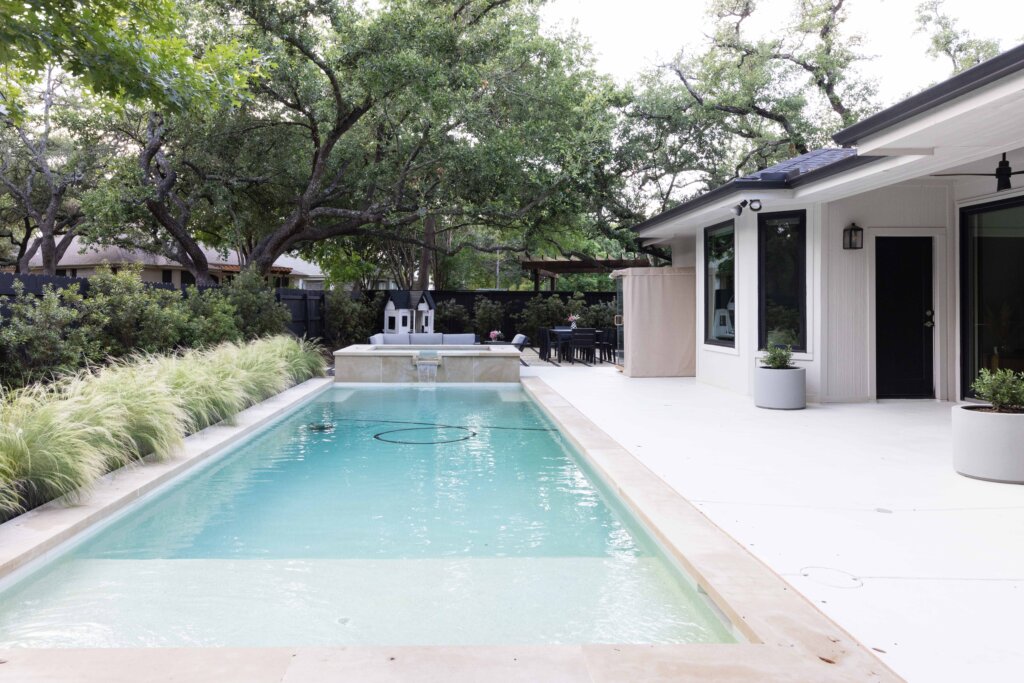
Our Favorite No-Grass Front Yard Ideas

